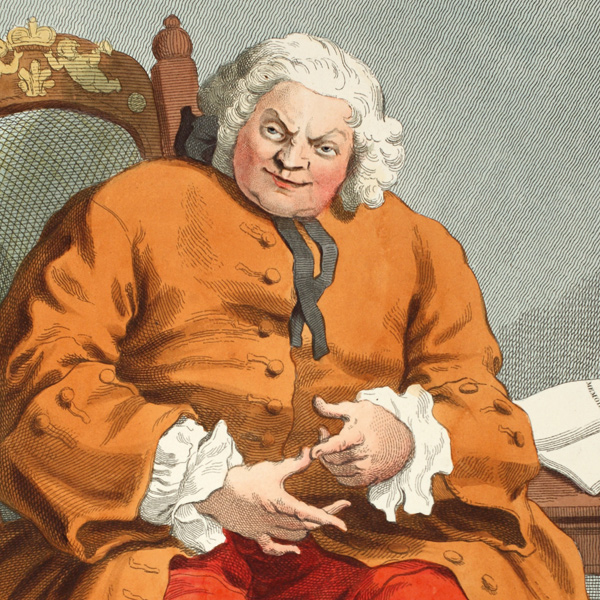This life of the 11th Lord Lovat, executed on Tower Hill in 1747, in the aftermath of the ‘Forty-Five’ Rebellion of Bonnie Prince Charlie, is primarily a work of pietas. Its author is the daughter-in-law of the last Lord Lovat, who landed with the first fighting troops of the D-Day invasion of Europe, striding ahead of them accompanied only by his piper. But Sarah Fraser deserves to be acclaimed as a notable biographer, too, for she tells a complex and sometimes bewildering story which she has amassed from a vast quantity of often intractable material. This is a brave and meaty book.
The years between the Glorious Revolution of 1688 and the accession of George III in 1760 constituted the great age of double-dealing in British politics. There was no rightful monarch, only a parliamentary one, and no one knew who would occupy the throne for long. As a result, almost everyone of significance, from the great Duke of Marlborough down, had dealings with both sides. North of the border, and still more beyond the Highland Line, the sense of insecurity was even greater, for the stakes were higher; and virtually every head of a landowning family was in secret correspondence with both the Stuarts and Government.
Simon Lovat was a product of this duplicity. He came from a junior branch of the Frasers, a vast fighting clan who had fought for William the Conqueror, and occupied 500 square miles of territory to the west of Inverness. We cannot even be sure of the date of his birth, and for much of his early manhood he was known as ‘Captain Beaufort’. The Frasers were, and still are, an astonishingly handsome race, especially the men, and Lovat was a giant, of great strength and endurance, though he appeared to his many enemies more like an ogre. Right at the end of his long life, when he was already a government prisoner, he was portrayed by William Hogarth. The print made from this brilliant work stresses the ogre-ish side and presents him as huge, calculating, fearsome and devilish. It sold by the thousand and made Hogarth a lot of money.
Lovat’s entire life was devoted to securing his clan inheritance, which came to him comparatively late. He found it had been infiltrated by members of the Mackenzie clan, and for 20 years he struggled to expel them. In the process he went to France, paid court to the Stuarts, was arrested and imprisoned for six years, and returned to engage in complicated lawsuits in Edinburgh and London. His smartest move was to come out for the Hanoverian George I during the ‘Fifteen’ rebellion, backing the winning side and securing government help to establish his title as head of clan Fraser.
He secretly became a Roman Catholic and made a series of dynastic marriages. The first, to Lady Amelia Murray, was forced and was little better than a rape. The second, to Margaret Grant of Grant, produced five children and was a success. The third, to Primrose Campbell, produced a boy, but she then left him. She found his style of living, as clan leader, at Castle Dounie, insupportable. Up to 400 people lived in the castle, and her bedroom, opened on to the hall, where never less than 20 people dined and often roistered half the night.
Lovat’s treatment of women was rough. He kidnapped one Lady Grange and had her taken to the Hebrides. She passed the last 13 years of her life being moved from one island to another, including six years in St Kilda in a tiny stone hut. We also have descriptions of him toying with the women of Inverness town, especially Kate Vint, a landlady’s daughter. Lovat loved dancing, which he said kept him fit, and he danced with Kate until, ‘observing Lovat’s legs as thick as posts, she fell a-laughing and ran off’. Giving the old man, then in his seventies, the slip, ‘she missed the second course of kisses … though she had endured the first.’
When Bonnie Prince Charlie landed in 1745, Lovat’s first reaction was to call him ‘that mad and unaccountable gentleman’. But the Stuart victory at Prestonpans tipped the balance, and Lovat’s son and heir, then 19, joined the rising with a number of Frasers. Lovat was by now 80 or over and did not take part in the fighting, but he was clearly implicated and his arrest ordered. After the defeat at Culloden, Charlie went on the run, and Lovat did likewise, being finally taken on a remote island in Loch Moran, the deepest lake in the Highlands.
By slow stages he was transported to London in a bamboo cage and there housed in the Tower. He was impeached for high treason and tried in Westminster Hall before the peers in March 1747. Denied legal representation and unable to call witnesses in his defence, his cause was lost, and each of the lords present, when asked to give his verdict, replied ‘guilty, upon my honour’. Lovat was sentenced to be hanged, drawn and quartered, but George II commuted it to beheading.
Lovat had a remarkably thick neck and he feared the executioner would hack it about. He provided a ‘purse with ten guineas’, saying ‘he shall have it if he does his business well’.
A vast concourse of people came to see Lovat beheaded. He had to be assisted up to the scaffold, but a Tower warden recorded: ‘He has a great share of memory and understanding, and an awful idea of religion and an afterlife,’ but there was no ‘fear or any symptoms of unease’. Indeed, Lovat himself thought he would go immediately to heaven, being a martyr. ‘He died like a lion’ was one verdict, and a single blow of the axe took his huge head off.
Sarah Fraser tells this remarkable tale with admirable patience, industry and understanding.






Comments